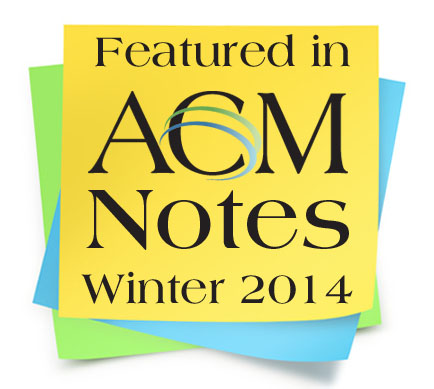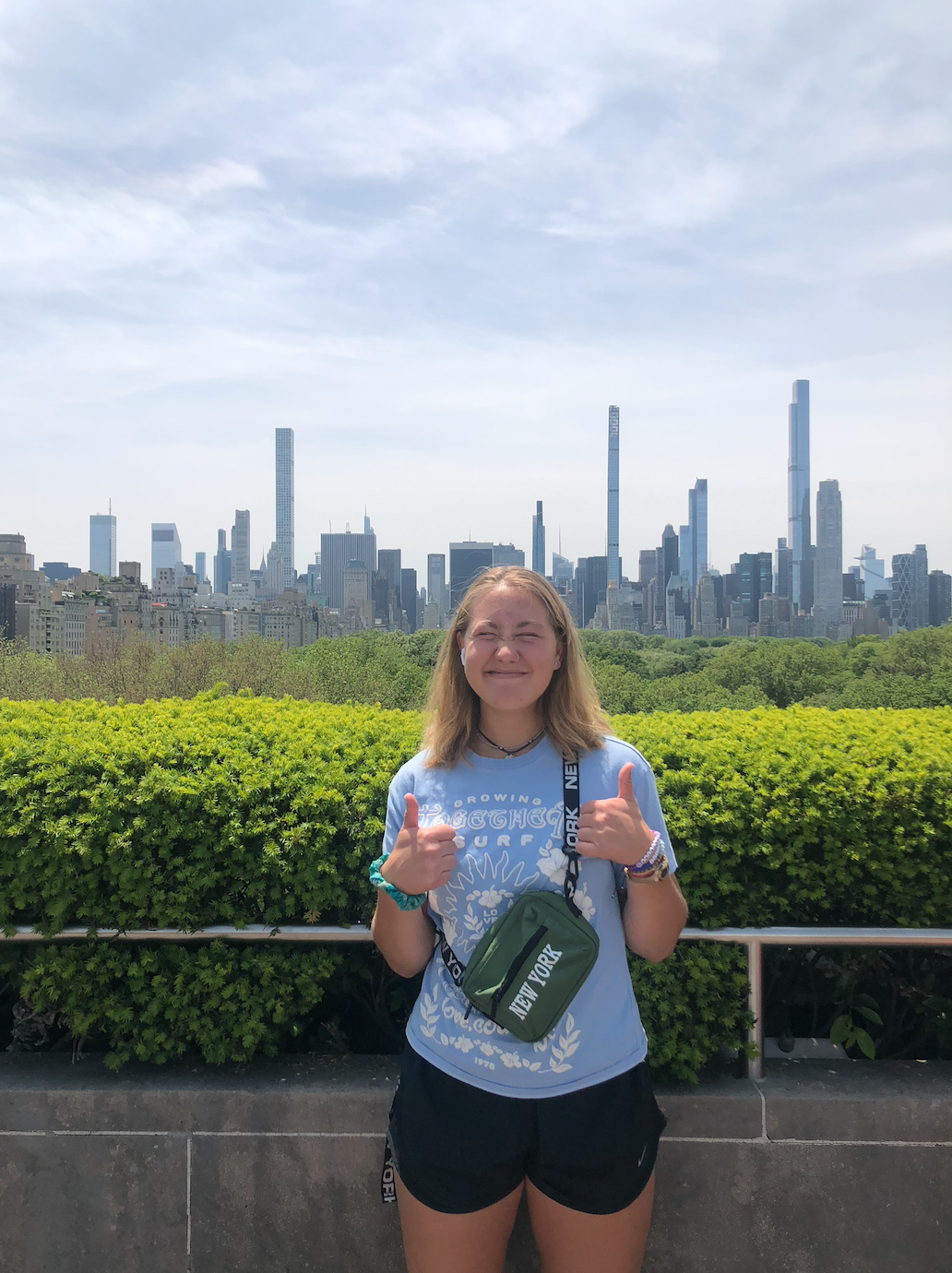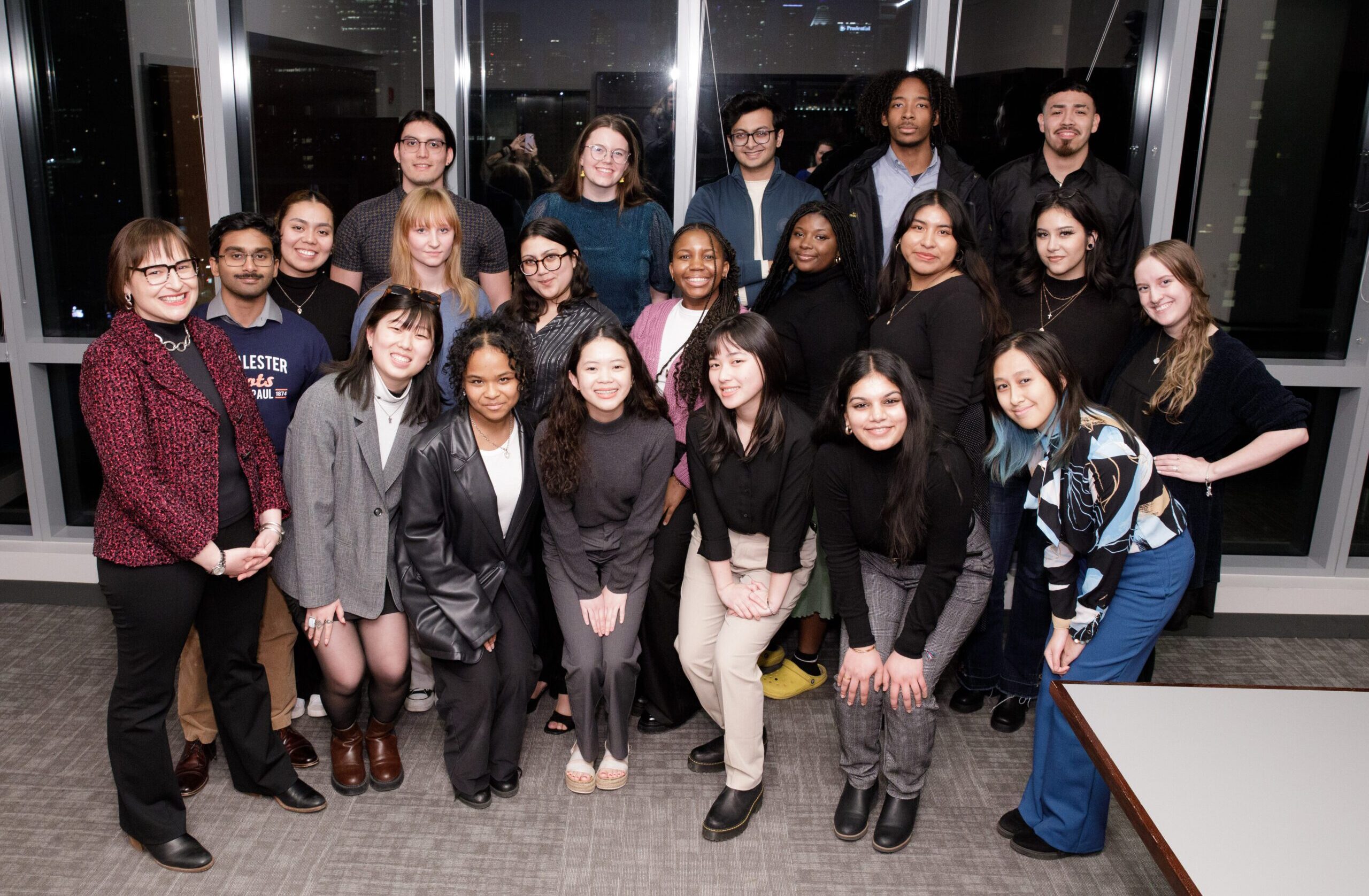What if you could get academic credit for going out to lunch, or grabbing a snack from a street vendor, or joining a friend’s family for an elaborate holiday feast? If you want to sign up for that course, raise your hand (or maybe your fork)!
While the part about getting credit for eating is in jest, Lawrence University anthropology professor Carla Daughtry is absolutely serious when she says that food can serve as an entrée to understanding a culture.
 Carla Daughtry
Carla Daughtry
Next fall, as Visiting Faculty for the Jordan: Middle East & Arabic Language Studies program, Daughtry will use food as a major ingredient in mentoring a group of ACM students as they immerse themselves in everyday life in Amman, the country’s capital city.
She will also teach a course about food, culture, and culinary tourism. So maybe that bit about getting credit for eating isn’t so farfetched, after all.
“You can learn a lot about a culture through their food,” said Daughtry. “You can explore how people present their culture through food, how their food production reflects their national identity, how food preparation communicates a lot about morals and religion, and how all of that is presented at the table.”
Daughtry has taken many trips to countries in the Middle East, particularly Egypt, where she studied abroad in college and later conducted her dissertation fieldwork. She’s also visited Jordan several times, when traveling as a student and to take a course in Arabic language.
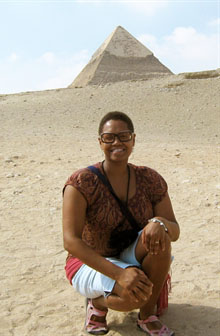 Carla Daughtry at the Giza Pyramids in Egypt during her Fulbright Fellowship.
Carla Daughtry at the Giza Pyramids in Egypt during her Fulbright Fellowship.
While migration and urban refugees have been a strong focus of Daughtry’s scholarly research over the years, she’s also developed a taste for examining food and culture. In 2010, on a Fulbright Fellowship, she explored culinary tourism in Egypt and had even contacted a woman who starred in a TV show about food in Cairo. She and her family had to leave the country, though, due to the political situation, and Daughtry spent the rest of that year studying immigrants, food, and identity in Italy.
In Jordan, she will pursue her new research interests further by teaching the course, offered as an elective through AMIDEAST, ACM’s partner in the program.
“The heart and soul of my course is going to be how, what, where, and when Jordanians eat various foods and meals,” Daughtry explained. “When students are living with their home stay families, they’ll experience food on a daily level in that home, so they’ll keep notebooks about food experiences and learn about food and eating in Jordanian families.”
She’s planning to include a variety of experiential aspects to the course – such as site visits to local restaurants, cooking schools, and possibly farms that produce olives, cheese, and other foods – as well as a cookbook analysis, to examine how cookbooks reflect national character or culture.
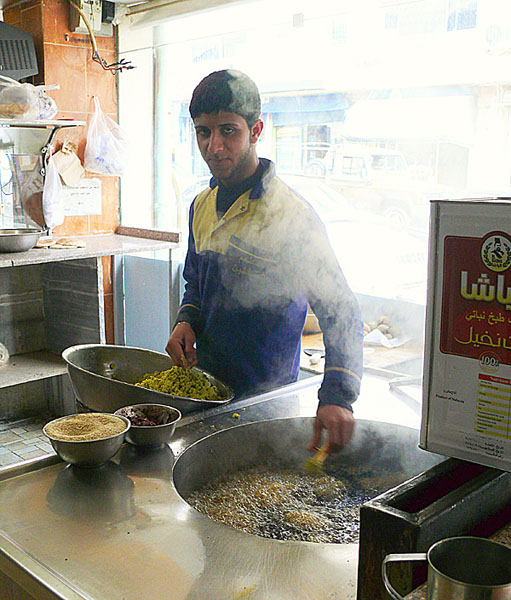 A cook preparing food in a small restaurant in the Amman area.
A cook preparing food in a small restaurant in the Amman area.
“Toward the end of the course, I would like to explore other contemporary issues,” Daughtry said, “such as whether there is Jordanian fast food comparable to global fast food and, if there are local TV cooking shows, what those shows say about Jordanians.” Given the substantial immigrant population in Amman, she also wants to discuss ways that migrants maintain their food traditions in another country.
Along with the elective courses, students on the Jordan Program study Arabic language – both Modern Standard Arabic and colloquial Jordanian Arabic – and complete an Independent Study Project (ISP), guided by the Visiting Faculty.
Since the program attracts students in a variety of majors, Daughtry noted, “I’ll be drawing from my own experiences teaching cultural research methods, but I’ll also have non-anthropologists [from] the humanities, sciences, other social sciences, the arts.” She’s planning to tap into AMIDEAST’s network of local scholars for help in connecting students with organizations and experts in Amman, and will keep track of the students’ progress during weekly one-to-one meetings.
Daughtry sees many potential avenues students could take for their projects, and the challenge will be to find the methods and resources that work for each one.
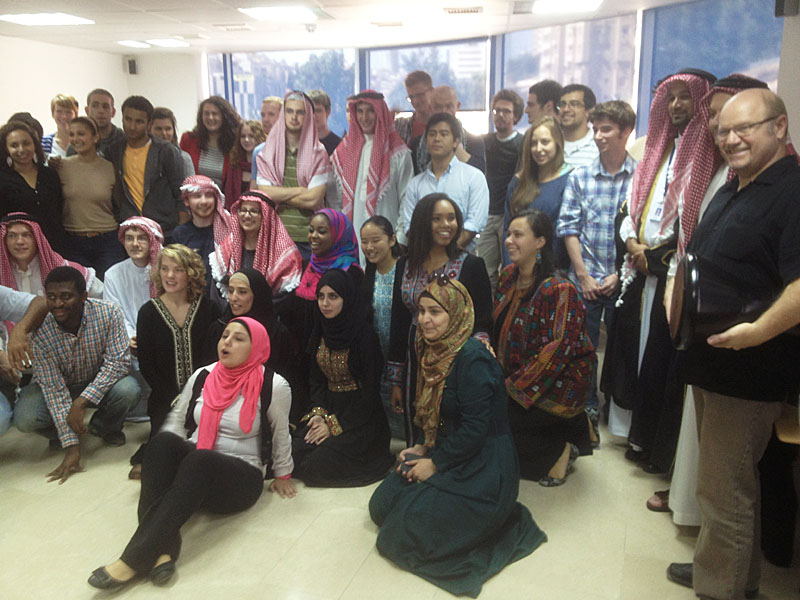 Students, faculty, and staff pose for a group photo after singing and dancing together to traditional drummed music at the celebration of Eid al-Adha at AMIDEAST.
Students, faculty, and staff pose for a group photo after singing and dancing together to traditional drummed music at the celebration of Eid al-Adha at AMIDEAST.
“There could be a service learning project in which they volunteer, or do a kind of internship where they job shadow and apprentice with an organization or an expert, and then they could write up an academic reflection,” she said.
“Students could do a cultural study, where they explore a group and learn about their shared belief,” Daughtry continued, “or a purely an academic inquiry or studying some type of creative expression. Maybe there’s literary or library research involved, so the key would be making contacts with local libraries or other institutions to get the student access to sources and texts.”
As an example, Daughtry said, “if I find out I have a pre-med student who’s interested in global health, I can think more concretely about a good research question that can be explored in ten weeks. We would spend the first part [of the semester] really narrowing a topic that is doable, at the same time working to get them access to an organization or some expert in their field of interest, and then determining their best way to gather their data to get the information.”
To cap off their projects and their semester in Jordan, Daughtry added, “I hope the students can present their work, either to AMIDEAST or to each other in class.”
And, no doubt, that will be an event to celebrate. Does anyone know a great place to go out for dinner?
Links:






